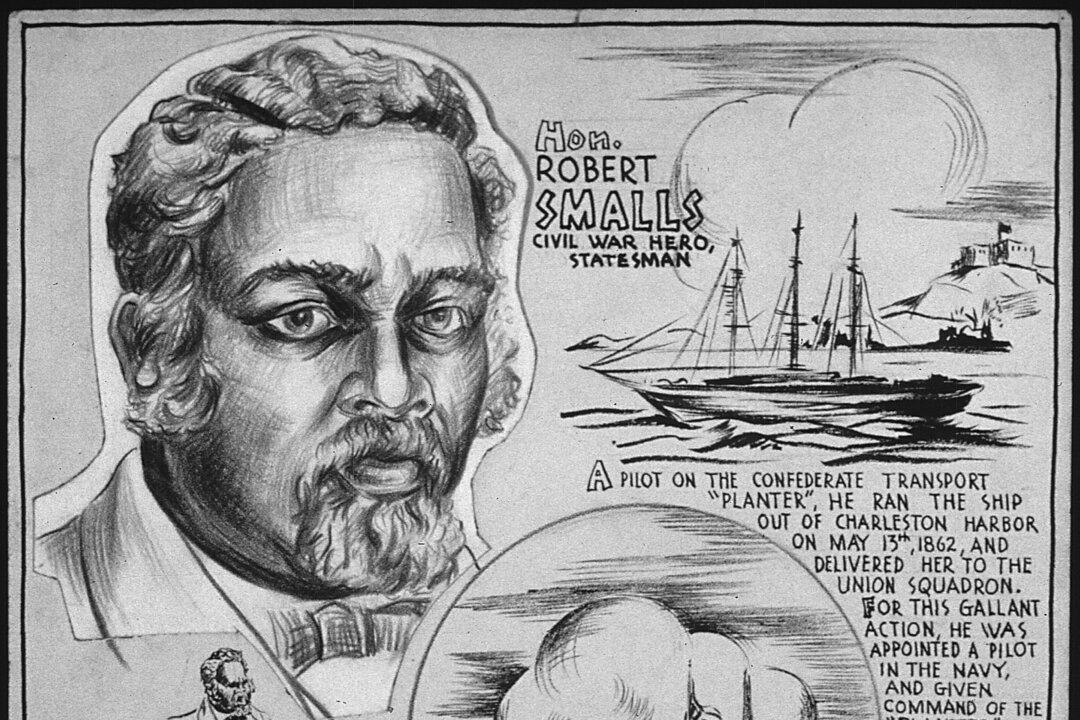None of Henry Hudson’s four attempts to find a northern passage from Europe to Asia were successful. His discoveries, however, taught Europeans much about the seas and lands on the western side of the Atlantic and led to more settlements in the west.
Little is known about Hudson’s early days, but most historians believe he was born in London around 1570, married, and had three sons. He was well educated as he had a vast knowledge of sailing, astronomy, and mathematics. Some historians suggest that he may have been related to founders of the Muscovy Company, an English trading business.

Expeditions
The Muscovy Company hired Hudson to captain the Hopewell on his first exploratory voyage; his goal was to find a northeastern passage to Asia. With his son John and a crew of 10, Hudson left England in 1607.The ship headed north close to the east coast of Greenland before it crashed into ice and had to turn back. All that Hudson and his crew found on this expedition were whale pods. This, however, led to knowledge of whaling territory that whalers used decades later.
Hudson set off again in the summer of 1608 and headed north and east. Unfortunately, the ship found itself surrounded by icebergs and had to return home once again. The crew saw even more marine life this time, including a sighting of what the crew thought was a mermaid.
The Muscovy Company refused to fund any more expeditions. In April 1609, the Dutch East India Company commissioned Hudson to find a northeast passage to the Far East. The Dutch and English fought hard to find another route to Asia; whoever found it could control the secondary trading route to Asia.

Going West
The Dutch ship “Half Moon” (“Halve Maen”) headed north and east, but once again was stuck in ice. This time, Hudson’s crew grew furious and attempted to mutiny. Hudson convinced the crew to head west to warmer waters to find a northwest passage.Hudson and his crew landed in Newfoundland, Canada, then adventured further south. They came upon a river (now named the Hudson River) that headed west. Hudson followed it, hoping it was the route to Asia.
The ship went over 150 miles up the river to what is now Albany, New York. They were landlocked. Hudson turned back and set sail back to Europe. It’s unknown why he sailed into the port in Dartmouth, England, instead of returning to Amsterdam.

Hudson found a group of wealthy Englishmen willing to finance him on yet another voyage. He left England again on April 17, 1610. On his ship Discovery, and a crew of just over 20 men including his son, John, Hudson set out once more to find a northwest passage.
Hudson steered his ship further north this time and headed through what is now the Hudson Strait to Hudson Bay in Canada. From there, Hudson headed south to James Bay.
Mutiny

Hudson wanted to continue exploring, but his crew mutinied. Hudson, his son John, and seven other crew members were cast off into a small boat and given minuscule rations. They were never seen again.
Most of the crew who had turned on Hudson passed away from disease or battles with indigenous peoples. The Discovery returned to England. The eight surviving crew members were tried for murder, but never convicted.
“Many people think that Henry Hudson was a failure because he never achieved his life’s goal, which was to find a quick water route to Asia,” said University of Southern California Professor Peter Mancall in the History Channel video: “The Final Expedition of Henry Hudson—A Tale of Mutiny and Murder in the Arctic.”
“But what we should remember is that he was an able navigator, that his ships always made it back to their investors, and that there is now more water named for Henry Hudson than any other human being that has ever lived,” Mr. Mancall said.
After he spent extensive time in the area mapping his expeditions, Hudson Bay, Hudson Strait, and Hudson River were named after him following his tragic death at sea. His explorations also laid the foundation for the Dutch to settle in what is now New York City in the 1620s.






